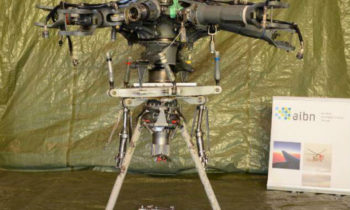 The analysis of the fatal Airbus Helicopters H225 crash near Turøy, Norway, is focusing on the examination of the main rotor head suspension bar assembly, the main gearbox, and the main rotor head (MRH), as investigators attempt to piece together how the aircraft’s MRH and mast suddenly detached in flight.
The analysis of the fatal Airbus Helicopters H225 crash near Turøy, Norway, is focusing on the examination of the main rotor head suspension bar assembly, the main gearbox, and the main rotor head (MRH), as investigators attempt to piece together how the aircraft’s MRH and mast suddenly detached in flight.
According to a newly-released preliminary report from the Accident Investigation Board of Norway (AIBN), the CHC Helicopter-operated aircraft (registration LN-OJF) was cruising at 2,000 feet with no indication of any problem when the “catastrophic failure” developed in the space of just one or two seconds. The report states that there “are no indications that flight crew actions were a factor in the accident.”
The crash took place as the aircraft, which was carrying 11 passengers and two crew, was returning to Bergen Airport Flesland from the Gullfaks B platform in the North Sea on April 29. The detachment of the main rotor head and mast caused the fuselage to plummet into a small island below, killing all 13 on board. The main wreckage caught fire following the crash, and then fell into the sea. The report concludes that the accident was not survivable.
Investigators were able to quickly retrieve the aircraft’s cockpit voice and flight data recorder (CVFDR) and send it to the Air Accidents Investigation Branch in the U.K. for download. Within two days, they had a complete data set of both voice and flight data. According to the preliminary report, the data show that “everything appeared to be normal” until the catastrophic failure, but the recordings end abruptly at that time.
The investigators also have access to the aircraft’s health and usage monitoring system (HUMS) data. The memory card in the HUMS unit has been downloaded by French investigators, but not yet examined.
The report emphasizes that the investigation is still at an early stage, and reveals that it is conducting a “significant” sea and land search for several key components that remain missing more than two weeks after the crash.
While the investigation is currently focusing on the MRH, MRH suspension bar assembly, and main gearbox, investigators have found no sign of fatigue failure in their initial examinations. However, detailed metallurgical examinations are yet to be performed.
Technical advisors from Airbus Helicopters and the H225’s engine manufacturer, Turbomeca, are supporting the investigation team, along with representatives from CHC, the Norwegian Civil Aviation team, the French investigation and analysis bureau, the European Aviation Safety Agency (EASA), and technical experts from QinetiQ in the U.K.
The H225/EC225LP was grounded for commercial operations by the U.K. and Norwegian civil aviation authorities in the aftermath of the crash (and the grounding was later extended to the AS332L2), while EASA issued an Emergency Airworthiness Directive requiring several one-off inspections of the type’s main gearbox as a “precautionary measure.” Airbus Helicopters then issued its own emergency Alert Service Bulletin, requiring, as a precautionary measure, the verification of the correct installation of all main gearbox suspension bar attachments in the H225.
In response to the release of the preliminary report, Airbus said it was “encouraged by the progress” of the investigation. “We continue to focus our efforts on providing assistance to the investigation team, while working closely with our global customers to ensure that checks mandated by Airbus Helicopters and EASA are completed in support of the continued operations of the EC225LP,” the company said in a statement.
